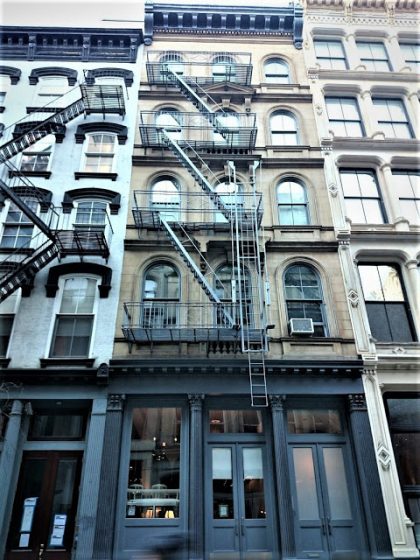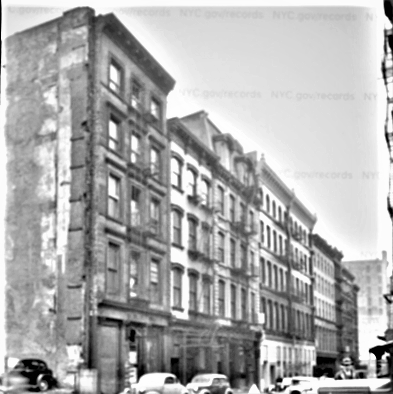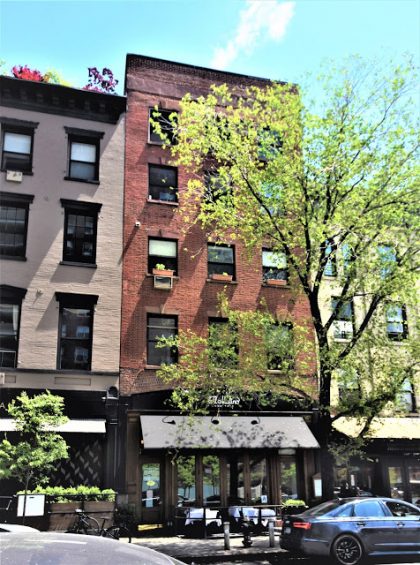If these walls could talk…
The History of Tribeca Buildings database—compiled from Tom Miller’s posts at Daytonian in Manhattan—has six more entries on the properties below. (Click the address to read the full text.) If you enjoy these, and you will, then you should definitely check out his website, which also has write-ups about buildings all over the island. And don’t miss his book, Seeking New York: The Stories Behind the Historic Architecture of Manhattan—One Building at a Time.
··················
44 WHITE STREET
When the three-story Eagle Hotel opened at No. 44 White Street, between Broadway and Church streets, the block was still mostly residential, lined with brick-faced three-and-a-half story homes. But the end of the line for the hostelry came in 1859. On Feb. 21 auctioneer William Witters announced he would be auctioning off “all the furniture, &c.” in the hotel, “also office and barroom furniture; also wines, liquors, segars, &c.” The development of the 25-foot-wide site was most likely thwarted by the outbreak of Civil War. As thousands of New York’s laborers marched off to the South, construction ground to a near halt in the city. But in 1865, the year the war ended, Aaron and Eliza Jacobs set to work.
………………………
105 FRANKLIN STREET
In 1849 a major outbreak of cholera occurred in Paris and then in London where it claimed 14,137 lives. The horrific disease spread to Ireland where many survivors of the Irish Famine, already weakened by starvation, fell victims. That year 5,308 people died in Liverpool, England, a major port used by immigrants heading to North America. They carried the disease with them, fueling a pandemic. Cholera spread with lightning speed, killing tens of thousands in New York City and St. Louis in 1849, including the former president of the United States, James K. Polk. The New York City government formed the Cholera Committee under the auspices of the 10 governors of Blackwell’s Island. As existing facilities to handle the sick were taxed, the city converted a stable building on Franklin Street between Church and West Broadway.
………………………
361 GREENWICH
In 1807 the 25-foot wide house at No. 361 Greenwich Street was erected by Isaiah Rodgers. Three and a half stories tall, it was faced in red Flemish bond brick. It’s peaked roof would have been pierced by one or two dormers. Handsome splayed brownstone lintels featured layered keystones. As the city expanded well-to-do homeowners moved away from the encroaching commercial district.
















